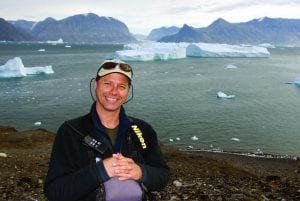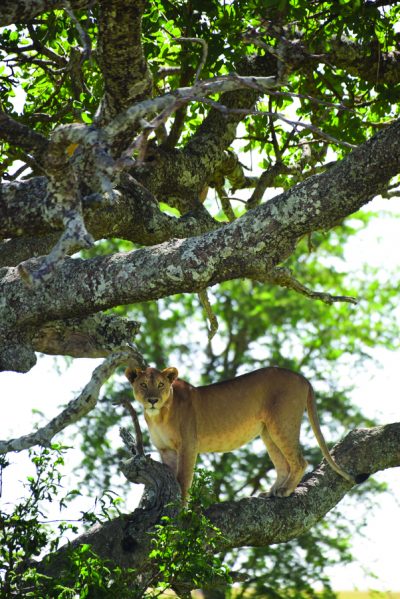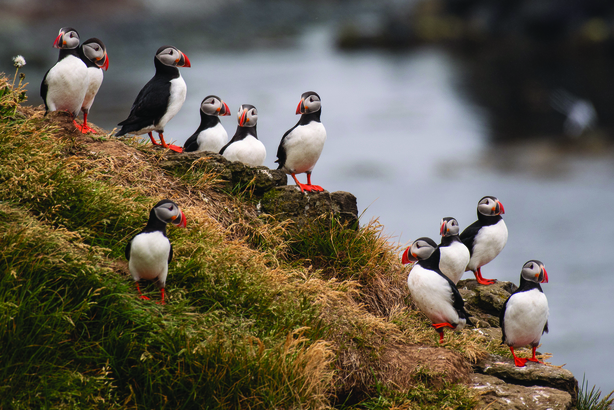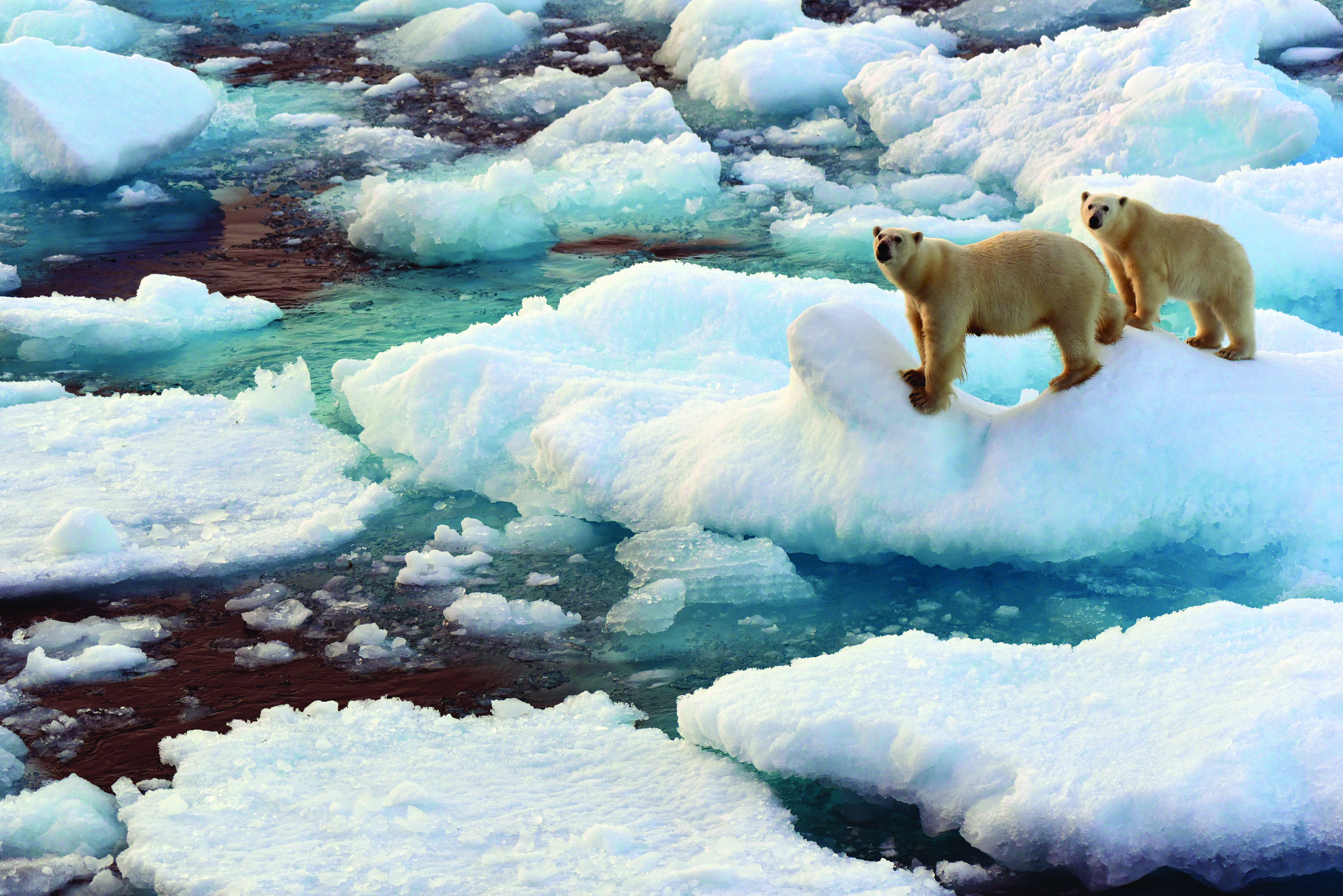Wildlife photographer Danny Catt got his first camera when he was 10 — and accidentally dropped it into the ocean within a week. “It was one of those old 110s, but to me it was a great loss,” he recalls.

Although that was the end of his camera, his interest in photography was just beginning. With the support of The Rotary Foundation, Catt went on to launch a career as a wildlife ecologist, naturalist, educator, and photographer.
“I am the most fortunate person on earth,” he says. “I’ve been to every continent, to the Amazon, Antarctica, the Arctic. I’ve stepped on the Greenlandic ice cap.” But, he adds, it’s not only about where he has been; it’s who he has worked with along the way. “I’ve had some great support, and Rotary has been a huge part of that for me,” he says.
To share the planet’s stories, Catt has taken months-long trips to Africa, South America/Antarctica, and Asia, documenting them on his Catt Trax blog for students to follow along. He also leads international ecology trips, with well-known clients including writers Barry Lopez and Margaret Atwood.
Says Atwood, “He is preternaturally good-natured, even when being doused with freezing cold spray, and although very well-informed, he never hesitates to admit that there is something he doesn’t know — invaluable in the face of nature.”

Catt is a fellow of the Royal Canadian Geographical Society and professor at the British Columbia Institute of Technology, guiding the next generation of ecologists, conservation officers, and park managers.
THE ROTARIAN: How did your passion for ecology begin?
CATT: My mom, Mariette, was an amazing woman who had seven kids in eight years — six of them boys. Every summer my father, Ozmer, would give my mom a break and would take whoever was interested on a lengthy camping trip. We went as far north as Alaska. We went to Yosemite in California, to Yellowstone, Banff, Jasper, Kootenay, and Yoho.
I must have been six or seven, and we were in one of the nature houses in E.C. Manning Provincial Park. There was this fellow who was a naturalist, and I thought, man, I would love that job — to be able to take people on nature walks and inspire them about the wildlife and landscape.
TR: How did you work photography into what you were doing?
CATT: My very first job, when I was 19, was a seasonal position in Kootenay National Park in the Canadian Rockies. One of my duties was to take photos for the park collection. The photos got used on some of the park brochures — and when you’re 19, that’s pretty sweet. When I started working in the ecotourism industry, I was hired as a photographer and naturalist. I can tell you what the bird is, and I can also show you how to use a camera.
TR: You were a Rotary Group Study Exchange member and Rotary Scholar. What impact did those experiences have on your career?
CATT: The scholarships gave me incredible confidence. They opened doors and gave me mentors, like Doug Forseth of the Rotary Club of Vancouver, and they opened my eyes to the planet.
My introduction to Rotary and The Rotary Foundation was a Group Study Exchange in the late 1980s. We travelled through northern India for five weeks. It was challenging to see the poorest of the poor and the richest of the rich. It opened my eyes to living outside my own country. I went to some amazing natural areas in one of the most densely populated countries in the world.
Then I was awarded an Ambassadorial Scholarship sponsored by the Rotary Club of Vancouver. I studied at the College of African Wildlife Management in Tanzania, where I met amazing people who were dedicated to conservation. Many of these park rangers risk their lives: One of my classmates in Tanzania was killed in Uganda.
I was given a special designation as a Preserve Planet Earth Scholar [a designation bestowed on some Ambassadorial Scholars in the 1990s to encourage ecological studies], and I took that to heart. That’s what my life’s really all about — using story, photography, and teaching to inspire people, from Grade 2 to my own students to the tourists who come on the expedition ships where I’m a staff member. This planet is changing so fast, and not all in a positive way.
TR: You’re a volunteer for the Scientists in School program. How are you seeing interest in conservation issues change?

CATT: In my visits to elementary and high schools, there is a strong interest — there are students who want to learn about and spend time outdoors. But the reality is that fewer are actually doing so. The book Last Child in the Woods: Saving Our Children from Nature Deficit Disorder by Richard Louv tells us that kids today are less likely or willing to spend time in nature. Many children are tied to their phones or digital devices and computer games. If they have no connection with the natural world, not knowing how we get clean water, not knowing that it’s a healthy planet that keeps us alive, then I am a little worried that future decision-makers will not be as planet friendly as they could be.
TR: What’s your biggest concern about the environment?
CATT: As we add another billion or 2 billion people in the next 30, 40, 50 years, water is going to be the key issue. We cannot survive without water. I truly believe that Rotary is one of the most important organizations on the planet that can encourage change. Rotarians are often leaders in the community, whose voices people will listen to. I got to participate in a PolioPlus National Immunization Day outside of Delhi. In India, 169 million kids were immunized that day. It’s unbelievable. That tells me that if we really want to make the world a better place, we can do it.
(This story first appeared in Rotary Canada magazine, January 2019, written by Nikki Kallio. Reprinted by permission from Rotary Canada magazine, January 2019. Copyright ©2019 Rotary International. All rights reserved.)

Very Cool!! Stimulating upbringing, wide exposure/experience plus realistic vision and a passionate Teacher/Naturalist. His thrust for sustainable resource management and eco- development oriented practices as a conscious/responsible global citizen is highly relevant!!